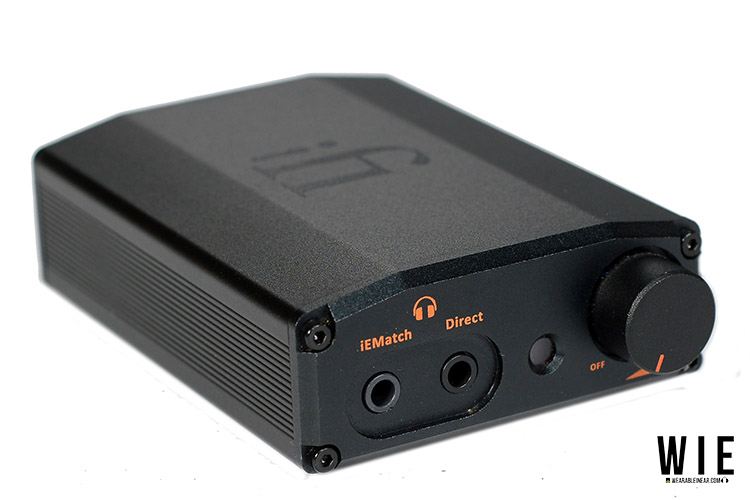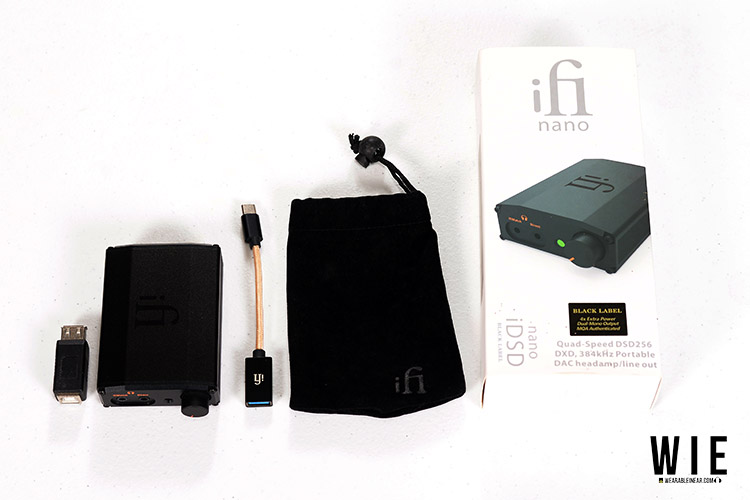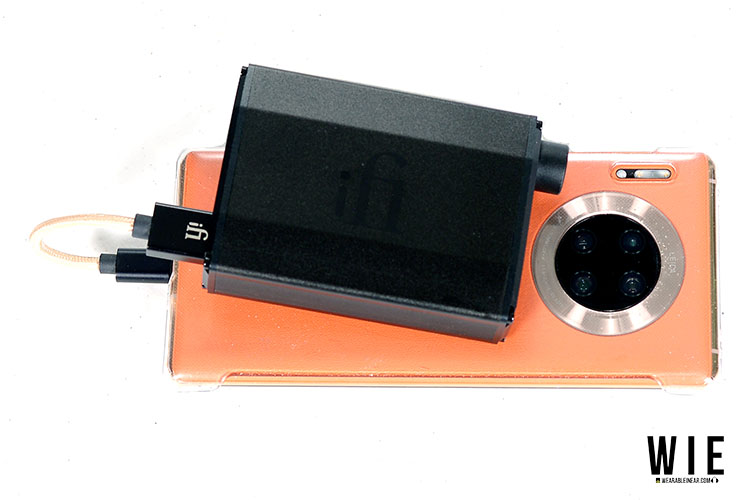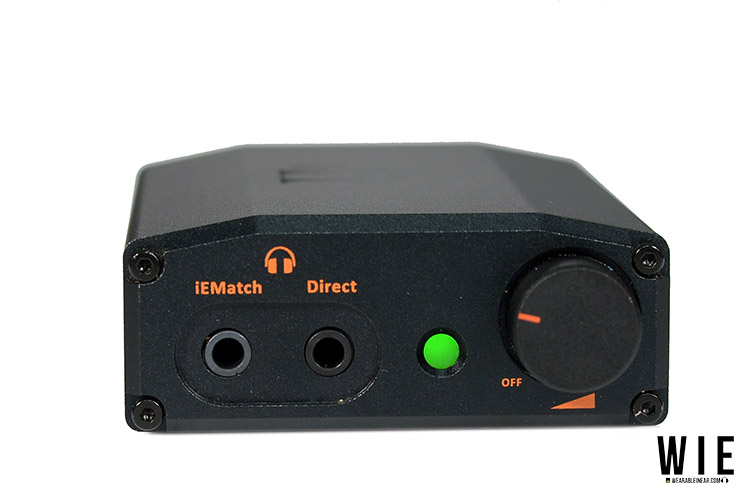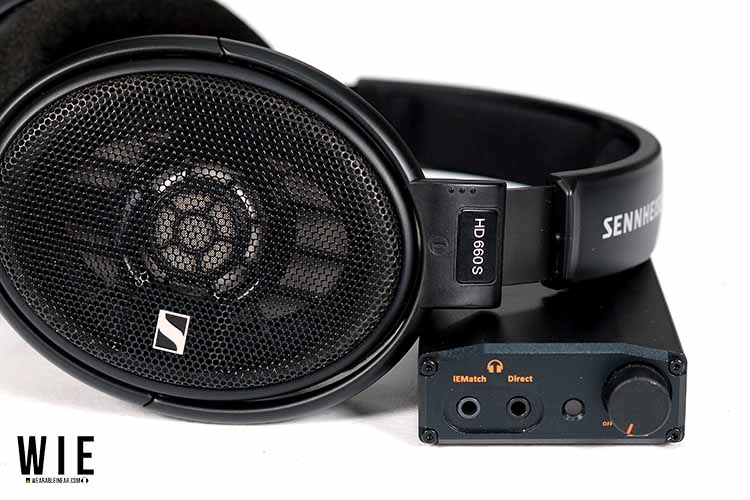There are lots of options when it comes to high-quality DACs and Amps. But one product that we have always been recommending on this website is the iFi Nano iDSD Black Label. It is positioned as their entry-level model, but with its great feature set and sound quality, we believe that it can compete with much more expensive offerings and it is still our top pick for the best entry-level portable DAC/Amp.
Additionally, unlike most of its competitors, iFi is a highly renowned brand in the audiophile community. Products such as the iFi Micro iDSD Signature are fan favorites because they combine great sound quality with great features such as their ridiculous driving power.
However, the market has been changing, and the entry-level price point is now more competitive than ever. This naturally raises the question. Is the iFi Nano BL still worth buying?
To help answer that question, we will be taking a detailed look at the iFi Nano BL. We’ll go over its build quality, usability, and sound quality.
This will also serve as a long-term review since I have been using this DAC/Amp for at least two years now, so you will know if this product has aged well. And, of course, we will be comparing it against newer models and tell you if there are better alternatives.
Disclaimer
The iFi Nano iDSD Black Label was purchased at its retail price. We are not affiliated with iFi Audio or any brand mentioned in this review. All thoughts and opinions are my own.
Contents
iFi Nano iDSD Black Label Review
Packaging and Accessories
The iFi Nano BL comes with everything you need but smartphone users still need to purchase a separate OTG Cable.
The iFi Nano BL is packed and presented in a very professional manner. The white box that it comes in looks very clean but has all the necessary information and basic specifications listed. Its size isn’t very excessive and is appropriate for the small form factor of the iFi Nano BL.
Inside, you are immediately greeted by the DAC/Amp as well as the extra accessories that it comes in. You get a soft pouch, a USB Cable for desktop use, and a USB Type B to USB A converter.
Unfortunately, the iFi Nano BL does not come with a USB Type-C OTG cable for Android smartphones and Android DAPs. It also does not come with any connectors for Apple devices. iFi does sell their own OTG Cable, which is the one I am using for this review.
Overall, iFi has done an excellent job of giving a great first impression for their product. And despite some notable exclusions, most of the accessories that it comes with make the iFi Nano BL immediately usable.
Accessories
- USB 2.0 Extender
- USB Type B to USB A Converter
- iFi Pouch
Design and Build Quality
The iFi Nano BL has a premium build that is very similar to iFi’s more expensive offerings.
Unlike most of its budget-priced competitors, the iFi Nano BL is a very well-built and well-designed model. The materials used and the overall construction is comparable to iFi’s higher-end models.
The all-metal build of the iFi Nano BL gives it a solid feel. Of course, there are lots of competing devices that are also made of metal. However, most of these budget DAC/Amps, such as the FX Audio DAC X6 and FX Audio D01, have a more basic and hollow build that does not inspire too much confidence.
The iFi Nano BL, on the other hand, has more tight tolerance. The edges feel smooth, and there are no noticeable imperfections. The weight distribution is also a lot better and makes the device feel more premium. But, of course, the added weight does not make the device feel too heavy.
Other components, such as the volume knob, feel very smooth. There is a noticeable click during the first volume step, which serves as the on and off switch. Also, despite years of using the device, the volume knob has not yet become scratchy.
As for its aesthetics, the iFi Nano BL sports an all-black color scheme with orange text on the front. I have owned the iFi Nano BL for at least two years, and the finish has held up exceptionally well.
And despite seeing its fair share of accidents, the finish still looks flawless. This cannot be said for all iFi products since the more expensive iFi xDSD is known to develop paint chips.
Portability and Form Factor
Despite its small form factor, the iFi Nano BL isn’t the easiest device to carry around.
Of course, what makes this DAC/Amp special is its size. As its name suggests, the iFi Nano BL is a very small device that is just roughly half the size of a modern smartphone. This unit can easily fit in a small bag or small cases such as the Pelican 1010 hard case.
But unlike other portable DAC/Amps such as the Chord Mojo, the iFi Nano BL can easily double as your desktop DAC/Amp. Its design, ports, and control placements are all easily accessible, just like with desktop DAC/Amps.
Additionally, leaving the iFi Nano BL plugged in won’t cause any problems. The charging feature automatically turns off once it detects that the battery is fully charged. I have been using this setup for years, and I have not noticed any major degradation in its battery life.
I do, however, have an issue with using the iFi Nano BL as a portable device. Due to its smaller size, I found difficulties with stacking it with smartphones and DAPs.
The iFi Nano BL doesn’t lay completely flat at the back of my devices, and the overall setup was quite bulky. This stacking issue seems to have been fixed with iFi’s recent budget offering, the iFi Hip DAC.
I mostly use the iFi Nano BL in portable mode during long rides. But for regular commutes, I choose to use a more portable DAC/Amp that’s easier to set up, such as the ddHiFi TC44B and the Audirect Beam 2SE.
Inputs
The iFi Nano BL only features a digital USB input. This should be more than enough for smartphone and laptop/desktop PC and MAC users. However, those who are looking for more flexibility will be left out.
I do understand that iFi needed to cut some inputs to save space and costs. However, I did encounter some devices that did not feature a digital audio output. And it was a shame because the iFi Nano BL would have massively improved the sound quality of those devices.
Outputs
In terms of its outputs, the iFi Nano BL has plenty to offer but also has some notable omissions. The iFi Nano BL features two 3.5mm outputs located on the front.
The first 3.5mm output contains iFi’s IEMatch technology. This essentially matches the impedance of your IEMs and aims to eliminate hiss with sensitive IEMs. This can also be considered the iFi Nano BL’s low gain mode.
The other 3.5mm output is the direct output which is commonly used for full-sized headphones such as the Sennheiser HD660S. This is essentially the iFi Nano BL’s high gain mode.
Additionally, both 3.5mm outputs can also act as balanced outputs. However, you will need a 3.5mm balanced cable or a 3.5mm unbalanced to balanced converter to activate this feature.
This is a shame since 3.5mm balanced cables are not as common as 2.5mm or 4.4mm balanced cables/converters. This seems to be addressed by iFi in the newer models such as the iFi Hip DAC and iFi Micro iDSD Signature that feature 2.5mm and 4.4mm balanced outputs.
The iFi Nano BL also features a single 3.5 mm line out found on the back. This is primarily used for connecting to external headphone amplifiers. Utilizing the line out of the iFi Nano BL will make it act as a standalone DAC for your external headphone amp.
Supported Formats
The iFi Nano BL supports almost every format under the sun. You can check out iFi’s website for a complete list of all supported formats as well as their corresponding LED colors. But for me, it covers all the files that I use.
It fully supports my high-resolution FLAC library, as well as DSD and MQA. Its MQA support is a nice bonus, especially for Tidal subscribers. This alone makes the iFi Nano BL a great option for beginners since you will never encounter compatibility issues for the foreseeable future.
Filter
Similar to other iFi products, the iFi Nano BL has a measure and listen filter switch located at the back. You can try these two modes for yourself to see how they can affect the sound. However, for me, I could not tell a noticeable difference even with different IEMs/Headphones and sources.
I wouldn’t consider these filters to necessarily be major sound-shaping options for the device. I would have preferred a bass boost option such as the one found on the iFi Hip DAC or iFi’s 3D Holographic Sound found on the iFi xDSD and the iFi Micro Series.
Sound Performance
Tested With: Sennheiser HD660S, Harmonicdyne Zeus, Fostex/Fitear TE100
The iFi Nano BL can easily compete with more expensive portable sources.
The iFi Nano BL has exceptional performance for its price point. It is able to produce a clean and neutral signature that is perfect for both casual music listening as well as more critical listening.
Like most of iFi’s units, the iFi Nano BL utilizes a Burr Brown DAC chip which is known to have a different sound signature from the usual Sabre, AKM, and Cirrus Logic DAC chips. These DAC chips are usually known for their smooth sound and great detail retrieval, which is perfect for the iFi Nano BL’s intended sound signature.
The iFi Nano BL is able to produce smooth but detailed highs, punchy lows, and transparent mids. It is pretty much everything that you would want with a high-quality source. Its technicalities are so impressive that it can even compete with more expensive sources, which we will be talking about in more detail later in the review.
Also, when paired with the right gear, the iFi Nano BL can help achieve an airy and open sound. These helped open up the soundstage of the Sennheiser HD660S and further enhanced already wide-sounding headphones and IEMs such as the Harmonicdyne Zeus and Fostex/Fitear TE100.

For those who are not fond of neutral-sounding DACs, I am happy to report that the iFi Nano BL does not sound boring or sterile. It does add up some flair to the overall sound to help make the listening experience more enjoyable. However, there are no odd additions that throw off the accuracy of the overall sound.
I have used this DAC/Amp as an alternative source for checking my mixes. And so far, they did not alter them in any negative way.
Even without using the iFi Nano BL in balanced mode, I personally think that it can easily compete with the balanced output of most DAP and DAC/Amps. This just goes to show that the implementation of the hardware is always the key to making great-sounding products.
The only tradeoff was that I had to use an adapter for my headphones and IEMs that already had balanced cables. During our tests, we have used ddHiFi’s balanced adapters, which we have also reviewed.
Driving Power

The iFi Nano BL is a very competent device when it comes to its driving power. This is very surprising given its small size. During our testing, it was able to comfortably drive headphones up to 150-ohms. In fact, it has been my daily driver for my Sennheiser HD660S.
It could still drive the 300-ohm Sennheiser HD650/HD6XX, but it was starting to show its limits. The soundstage started sounding congested, and the bass was lacking when compared to more powerful sources.
But with that said, the iFi Nano BL played well with most of our test equipment. I would say that the only time you would need to truly upgrade from the iFi Nano BL is if you purchase more demanding headphones, which are usually found in the higher price tier.
The iFi Nano BL’s driving power easily makes it a great option for beginners who do not own a lot of gear. You can confidently buy higher impedance headphones without worrying that your source will be a bottleneck to the sound.
Battery Life
During our testing, the iFi Nano BL was able to last anywhere from eight to ten hours. This was fairly consistent and did not show signs of battery degradation in the two years that I have been using it.
I find its battery life to be adequate for commute and general portable use. And if you ever run out of battery, you can always use your source to give power to the iFi Nano BL.
Just a quick note. If you want to use the iFi Nano BL’s internal battery, make sure that you turn it on before you plug it into your device. And if you want to use your device to charge the iFi Nano BL while in use, make sure to plug it into your device first before you turn it on.
Comparison
iFi xDSD

The most popular upgrade to the iFi Nano BL is the iFi xDSD. And during our test, I would say that the iFi xDSD is an upgrade in every way except for the finish.
In terms of its controls, the xDSD has a digital volume wheel which means it won’t get scratchy over time. Additionally, the inclusion of Bluetooth makes the xDSD a better portable device.
But the biggest advantage of the xDSD is its superior sound quality. It takes everything that was already good about the iFi Nano BL and makes them even better. The soundstage is wider, detail retrieval is better, and the overall sound you get is a lot more satisfying to listen to. Also, the additions of 3D Holographic Sound and a bass boost make the xDSD more versatile than the iFi Nano BL.
If you are willing to pay more for better sound quality and wireless features, we highly recommend getting the iFi xDSD.
DAPs
In order to prove just how much of a good value product the iFi Nano BL is, we decided to compare it against more expensive sources. Of course, comparing a portable DAC/Amp to DAPs isn’t totally fair, especially since DAPs have lots of extra components that bring up the total cost.
However, portable DAC/Amps and DAPs serve the same purpose. They are both high-resolution audio devices that are meant for users on the go. Anyone looking at a portable device is most likely looking at these two product types; therefore, they are worth comparing.
We have decided to compare the iFi Nano BL against the midrange Fiio M11 and the former flagship AK 380 + Amp. Compared to the M11, which has dual AK4493 DACs, we found the iFi Nano BL to be slightly better in terms of overall details and soundstage.
When compared to Astell & Kern’s former flagship, the AK is still the clear winner. The soundstage is wider, the resolution was better, and the music seemed to have more energy and character. But again, considering the massive price difference, I would say the iFi Nano BL still did pretty well.
Overall, when choosing between a midrange DAP and the iFi Nano BL, we would most likely go with the latter. You get relatively similar sound quality at a lower price tag. You will also be getting a smoother user experience when paired with a capable smartphone.
Verdict
The iFi Nano iDSD Black Label isn’t a perfect device. It isn’t the best unit for portable use and lacks some inputs and outputs that its competitors have. But when you consider that it is one of the only few options that serve everything in one coherent package, then that alone still makes it a great buy.
Also, the iFi Nano BL isn’t just a jack of all trades type of product. It is legitimately one of the best sounding sources that you can get for its price point. And when you combine that with its excellent amplification power, you have a nice little DAC/Amp that can be used even if you upgrade to headphones twice or thrice its price.
We highly recommend the iFi Nano iDSD Black Label for beginners who are looking to kickstart their audiophile journey, as well as anyone who just wants a compact, high-quality source for portable and desktop use.
Albums Used For Testing
- Milet – Who I am
- Babymetal – Legend Metal Galaxy
- Mamamoo – Travel
- Periphery- Periphery 3 and 4
- Blackpink – The Album
- Final Fantasy VII Acoustic Arrangements
- Square Enix Jazz- Final Fantasy VII At Billboard Live Tokyo
- Sawano Hiroyuki – Best of Vocal Works
- Yorushika – Plagiarism
- Intervals – Circadian

Stephen is a musician, cinematographer, and headphone enthusiast who is passionate about reviewing audio equipment. He has been playing guitar for at least a decade, which introduced him to professional recording equipment such as headphones and in-ear monitors. With the help of reviews and online content, he was able to learn the ins and outs of the hobby. His goal is to give back to the community by providing quality content to help others enjoy the beautiful (and expensive) world of audio.
Favorite Headphones: Sennheiser HD660s
